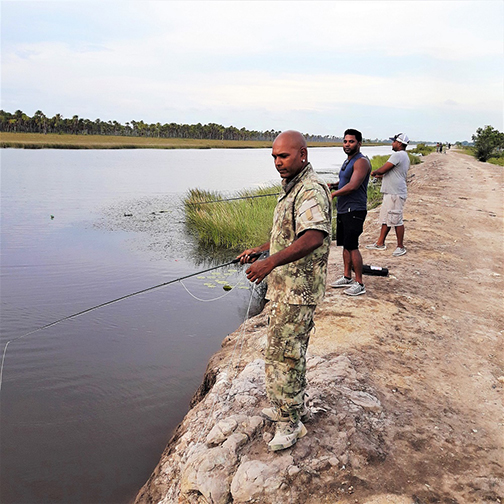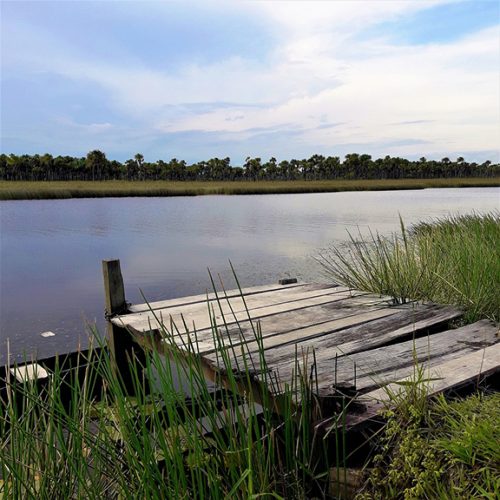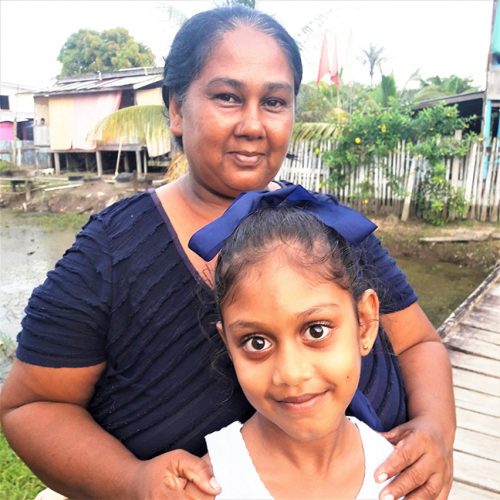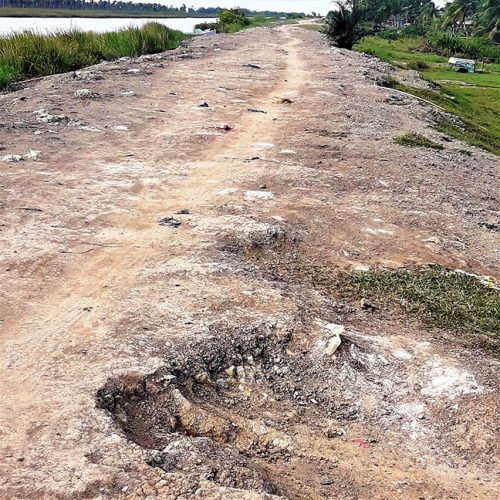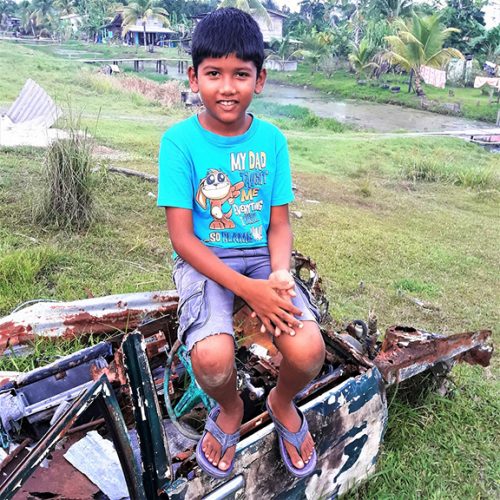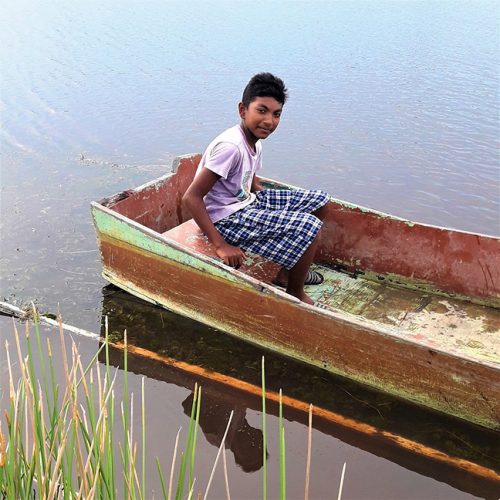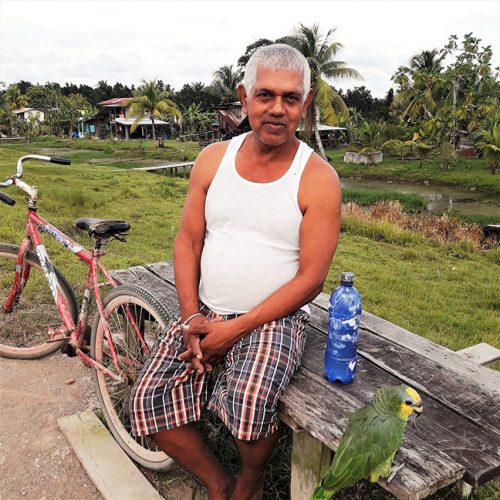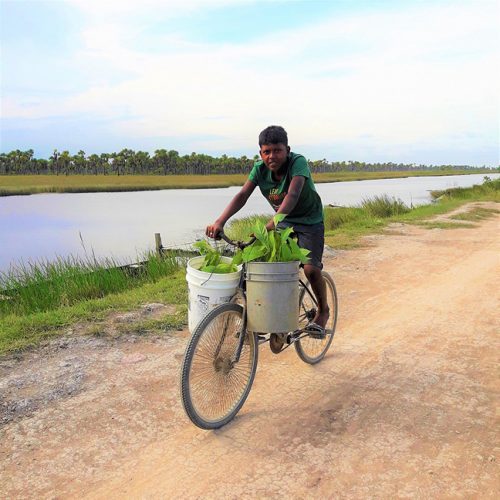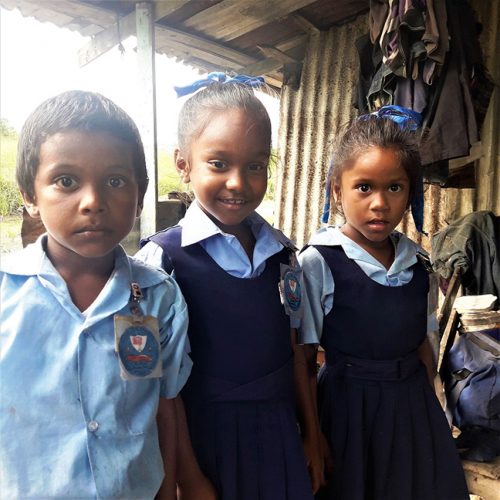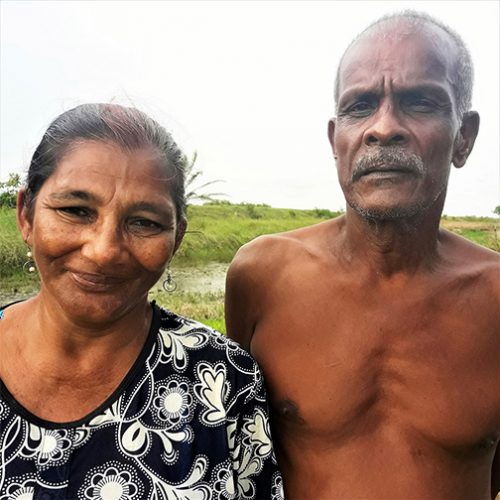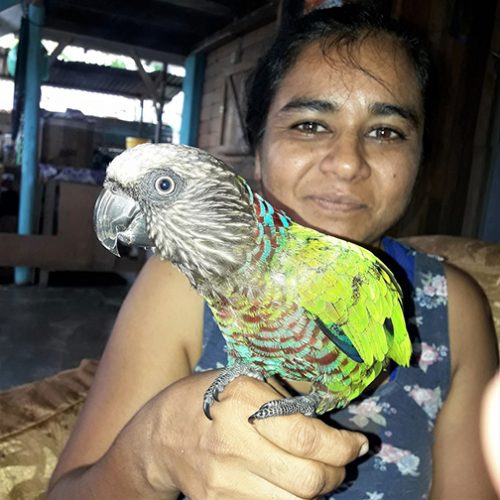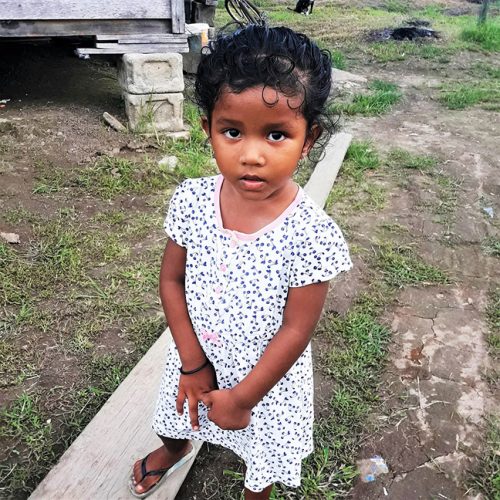The Conservancy Dam is the last of all the communities in Canal Number One Polder and is situated approximately seven miles from the Bagotville junction on the West Bank Demerara. The village, said to span a two-mile radius, is believed to have been in existence for more than 30 years.
Although there is no village signboard, it is obvious that the dam is the last stop. Two huge pontoons block the dam preventing vehicles from driving along it. The residents use bicycles or walk. They also take their boats along the conservancy – all two miles of the dam on which they reside is the government’s reserve.
The dam is a border of the conservancy and is hemmed by Good Land (Okoo) and Good Hope villages on the other side. Thousands of palm trees in the background over the glistening black water make for a picturesque view especially at sunrise and sunset, villagers agreed.
The main economic activity is farming though not on the dam itself – unless it is a kitchen garden. There is no backdam to serve as farmland like many of the other places in Canal Number One so the men work on private farms elsewhere.
At one house where biscuits and sweets lay neatly in rows on table, Seeta Sookram was having her lunch and keeping watch for customers. Sookram was born and raised in Parika, but then her father died when she was 10 years old and she and her siblings went to live with relatives. They returned to live with their mother after she remarried and was seemingly in a better position to raise them. However, according to the woman, her stepfather was almost always drunk and her mother thought it best to find a suitor for her daughter. Sookram married a man from Canal Number One Polder when she was 16 years old and they settled on the dam 26 years ago.
She soon adjusted to the life. There was no electricity or potable water. She would use the conservancy water for cooking, drinking, washing and bathing. The woman noted that at one time one of her sons fell into conservancy while he was next to her; she pulled him out right away. However, she added that it was always dangerous to have children around the water’s edge. Sookram was relieved when the authorities ran pipelines from the conservancy into residents’ yards. With the conservancy being situated at a higher level, water easily ran through the pipelines; she pulled a stop out to demonstrate this. Over the years Sookram’s family was one of four lucky enough to benefit from electricity. However, the water situation has remained the same. Sookram now relies on the rain water for cooking, drinking and making ice for customers.
Sookram shared that before she began living up front on the dam, she lived further back which made it difficult for her to get her children out to school. Most of the time, the children walked the dam unless there was someone on their way out by boat to give them a ride. She recalled paying $1,000 a week to assist with buying gas so her children didn’t always have to walk out. A few years later, they were able to move to the front of the dam. However, Sookram still worries about the children who have to walk out, especially when it rains. “I would be really glad if they could fix the dam. When it raining the children would tuck up their uniforms… their foot full of mud above their knees. My children get big now but I’m sorry for the little ones,” Sookram said.
The woman shared that last Christmas the area flooded and some persons had to leave their homes. Her place was not flooded though. She had hoped that by now that the drains would have been dug to allow for better drainage, but nothing has happened and the rainy season is coming again. Her pet parrot Polly took to climbing on us, pecking at any new thing she was curious about. Just as she was putting Polly in a corner on another bench, three little children on their way home from school made their way down some stairs in the dam to Sookram’s yard to buy snacks.
Rooplall Raghubeir stood in his yard
looking out as his grandson walked out of the yard making his way to karate classes. His granddaughter clung to him and his wife Indranie Seunarine was raking the yard. He has been living in the village for 20 years, his wife for 25 five years. Raghubeir hails from Goed Fortuin, right on the West Bank Demerara but Seunarine came from New Amsterdam. According to the woman she hasn’t been back to Berbice in years. Her sister would visit from there every now and again, but with hike in the bridge toll expected to come in November she is not sure when again she will see her sister.
Raghubeir said life on the dam was a “punishment” because of the distance and lack of proper conveniences. He hates having to squat. “I apply for a houselot since 2000. I went back to them when I had enough money two years ago and they said they had no houselots available in Parfait Harmonie. We are living here because we have nowhere to go,” the man lamented.
After a surgery some years ago, he stopped working and Seunarine and their son help to provide for the family. The couple pointed to what was left of their garden after the flood last year. They had planted cash crops and ground provision. The water was almost two feet high and reached the floor of their house. However, it was not as bad as the 2005 Great Flood which saw them having to leave their home.
But Seunarine mentioned that she loves the quiet that comes with living on the dam. The family is praying that they can soon have their own place. “This is the reserve; if them tell we come off the land, we got to come off,” she noted.
As the afternoon wore on neighbours stopped to chat with each other. Some sat side by side on the dam. Men stopped on bicycles and children played.
Chandanie Baksh stood on her bridge looking out on the dam with her grandchildren. She was among the first persons to settle on dam 29 years ago, when there were only four other families living here. “It was scary at first when I moved here. I was accustomed to neighbours all around me but on the dam, people lived far apart,” Baksh said.
“The good thing about living here is that you don’t have to worry about people troubling you or you ain’t got to frighten that you left your house and you’ll come back and find it empty. The only bad thing is that when the rain fall it does flood and not that alone but the dam gets muddy and the children does get a hard time to go to school.”
While many of the persons work on farms, her husband works at a sawmill in Canal Number One. She is one of many persons who have no electricity, but use solar panels. She noted that the set up is not cheap. Persons who want to have a fridge have to buy the big panels and they also need an inverter to transfer the current to a battery so that it keeps charged for the night.
The conservancy makes having fish curry easier for the families along the dam. Baksh’s husband would set seven or eight fish hooks overnight and, in the morning, he would find sometimes five or six hurris at the end. When the conservancy water rises, she said, it would seep through cracks in the dam and flood the four-foot drain separating her from the dam. When this happens, her husband would set a seine in the flooded drain for patwa.
The conservancy, she said, is teeming with fish and attracts people from all over especially on Sunday and holidays when they would picnic and fish.
The only thing the dam needs now she said is electricity, potable water and to be fixed so that the children can traverse to and from school.
